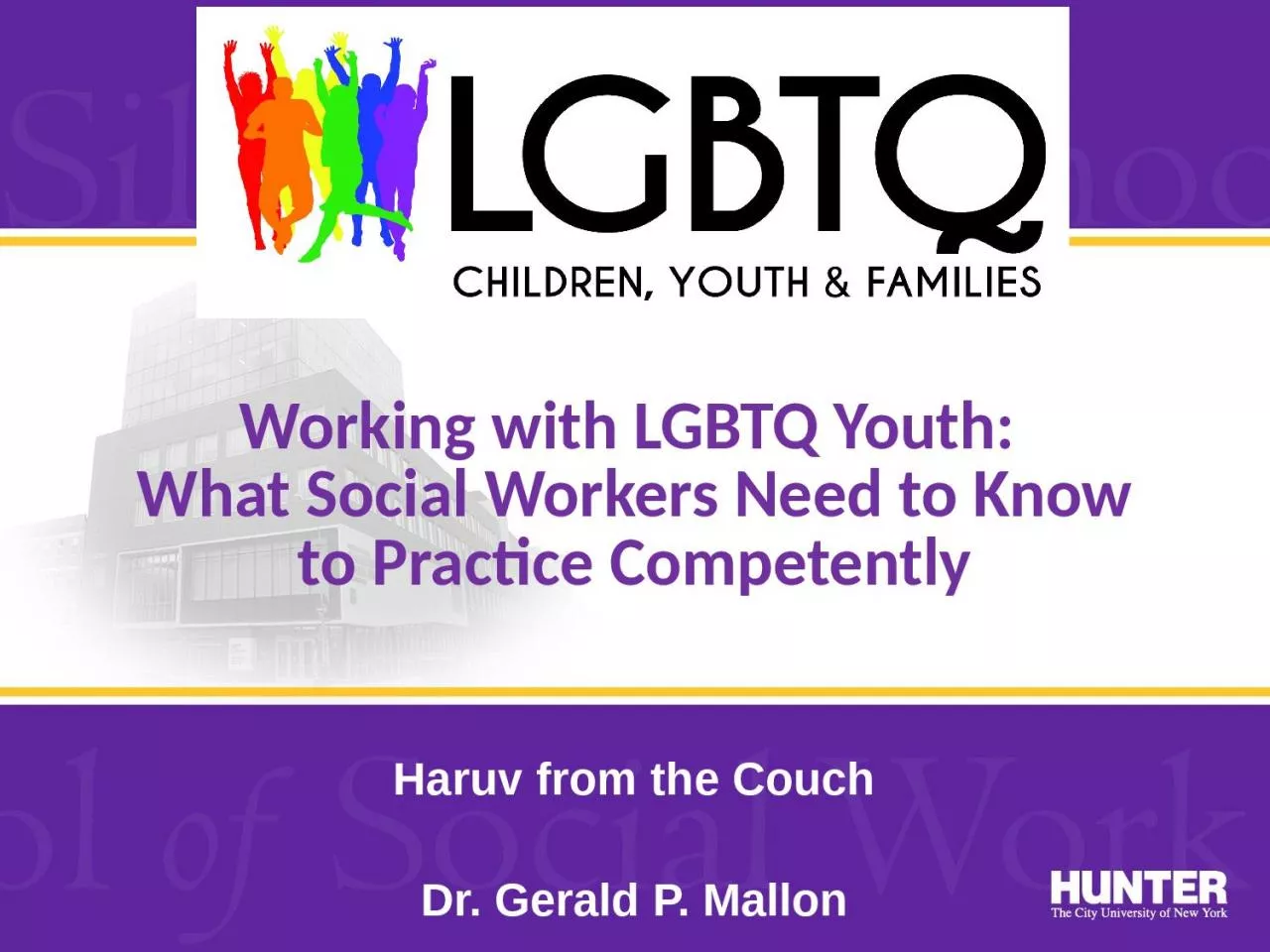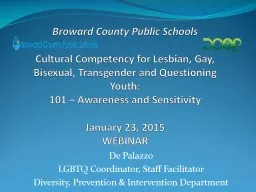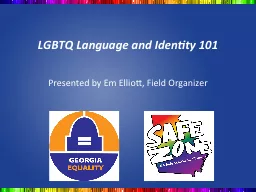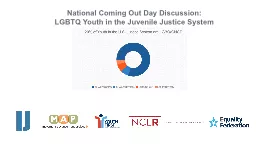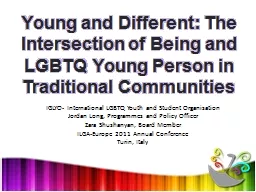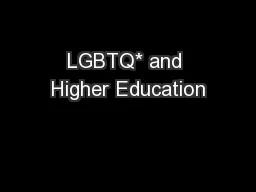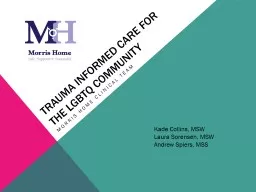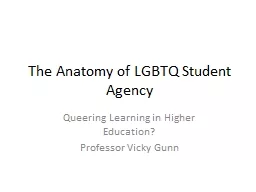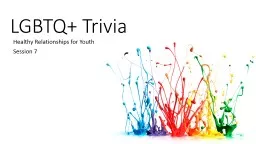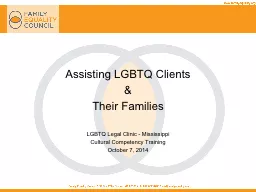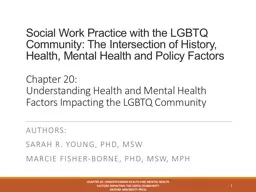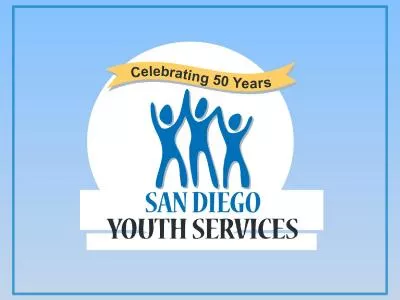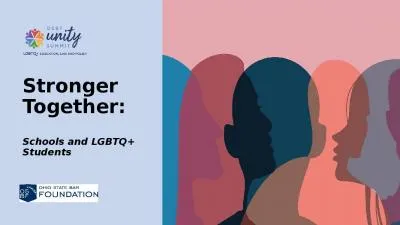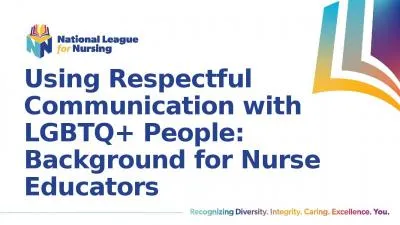PPT-Working with LGBTQ Youth:
Author : SereneBeauty | Published Date : 2022-08-03
What Social Workers Need to Know to Practice Competently Haruv from the Couch Dr Gerald P Mallon Agenda Introduction Language Disclosure Assessment Recommendations
Presentation Embed Code
Download Presentation
Download Presentation The PPT/PDF document "Working with LGBTQ Youth:" is the property of its rightful owner. Permission is granted to download and print the materials on this website for personal, non-commercial use only, and to display it on your personal computer provided you do not modify the materials and that you retain all copyright notices contained in the materials. By downloading content from our website, you accept the terms of this agreement.
Working with LGBTQ Youth:: Transcript
What Social Workers Need to Know to Practice Competently Haruv from the Couch Dr Gerald P Mallon Agenda Introduction Language Disclosure Assessment Recommendations Resources References Language. RISE . Project. Recognize Intervene Support Empower. Permanent . Families for . LGBTQ . Children and Youth. . A Project of the L.A. Gay & Lesbian Center. California Child Welfare Council . Presentation, March 12, 2014. Cultural . Competency for Lesbian, Gay, Bisexual, Transgender and Questioning Youth:. 101 – Awareness and Sensitivity. January 23, 2015. WEBINAR. De Palazzo . LGBTQ Coordinator, Staff Facilitator. Diversity, Prevention & Intervention Department. Presented by Em Elliott, Field Organizer. Supporting LGBTQ Youth. Exercise. : . What are the five . most important . things/people in . your life?. . What Are We Here For?. . What about Georgia?. FACT: The vast majority of LGBT students in . LGBTQ Youth in the Juvenile Justice System. Welcome – Ian . Palmquist. , Equality Federation. What do we know about LGBTQ youth in the juvenile justice system? – Naomi Goldberg, Movement Advancement Project. Different. : . The. . Intersection. of . Being. and LGBTQ Young . Person. in . Traditional. . Communities. IGLYO- International LGBTQ Youth and Student . Organisation. Jordan Long, . Programmes. LGBTQ* students are at the . highest risk . for experiencing conduct that interferes with their ability to live, learn, and be successful on campus. The threat of violence in relation to their identities; greater risk for sexual assaults accompanied by violence; transgender men and women are at the greatest risk. Morris Home Clinical Team. Kade Collins, MSW. Laura Sorensen, MSW. Andrew Spiers, MSS. Today’s Agenda . Introductions. Gender and Sexuality Review. Microaggressions. . & Social Climate. Rites of Passage. Queering Learning in Higher Education?. Professor Vicky Gunn. A starting point. For some LGBTQ students identity development is experienced with a heightened sense of shame and low self-worth = . alienation. Session 7 . LGBTQ Trivia. Q1. : A person whose gender identity does not correspond to that person’s biological sex assigned at birth is…? . Bisexual . Gender non-conforming . Transgender . LGBTQ Trivia. Assisting LGBTQ Clients & Their Families LGBTQ Legal Clinic - Mississippi Cultural Competency Training October 7, 2014 Introductions Emily Hecht-McGowan Director of Public Policy Denise Brogan-Kator Chapter . 20. : . Understanding Health and Mental Health Factors Impacting the LGBTQ Community. Authors: . sarah. r. young, . phd. , . msw. Marcie . fisher-borne. , . phd. , . msw. , mph. 1. Chapter 20: Understanding health and mental health factors impacting the . Joke Ilanit (She/Her) . Gilbert . Gontes. (They/Them). Roisin Mackenzie (They/Them). Today’s Topics. LGBTQ+ terminology . Risk & protective factors for LGBTQ+ youth. How to create safer spaces. “. It is not justice if we leave behind members of our community, if we ignore the interconnected oppression of those we share community with.” - . Skylar Lee. Died by suicide at age 16. 16% . of LGBTQ kids have been threatened or injured with weapon at school. Objectives: Background. Upon completion of the PowerPoint session, the learner will be able to:. Define terminology used by LGBTQ+ people.. Describe the population statistics of the LGBTQ+ population..
Download Document
Here is the link to download the presentation.
"Working with LGBTQ Youth:"The content belongs to its owner. You may download and print it for personal use, without modification, and keep all copyright notices. By downloading, you agree to these terms.
Related Documents

